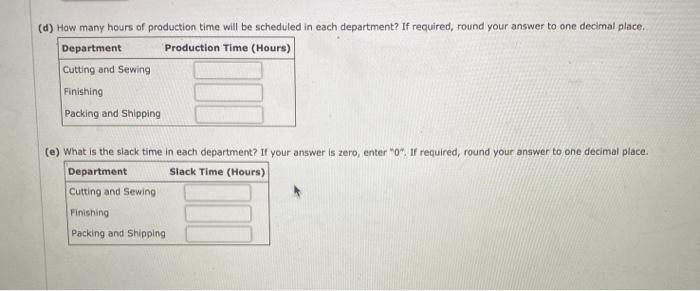Kelson Sporting Equipment, Inc., makes two different types of baseball gloves: a regular model and a catcher's model. The firm has 600 hours of production time available in its cutting and sewing department, 300 hours available in its finishing department, and 200 hours available in its packaging and shipping department. The production time requirements and the profit contribution per glove are given in the following table: Production Time (Hours) Cutting and Packaging and Model Sewing Finishing Shipping Profit/Glove Regular model 1/2 1 1/6 $4 Catcher's model 3/2 1/2 1/2 $8 Assuming that the company is interested in maximizing the total profit contribution, answer the following: (a) What is the linear programming model for this problem? If required, round your answers to 3 decimal places or enter your answers as a fraction. If the constant is "1" it must be entered in the box. Do not round intermediate calculation. If an amount is zero, enter "O". Let R - number of units of regular model. Cnumber of units of catcher's model. Max R+ s.t. R+ c - Select your answer Cutting and Sewing Finishing R+ C R+ - Select your answer Select your answer - Select your answer Packing and Shipping R, C (b) Develop a spreadsheet model and find the optimal solution using Solver. How many gloves of each model should Kelson manufacture? If your answer is zero enter"0" Regular Model units Catcher's Model - units (c) What is the total profit contribution Kelson can earn with the given production quantities? (d) How many hours of production time will be scheduled in each department? If required, round your answer to one decimal place. Department Production Time (Hours) Cutting and Sewing Finishing Packing and Shipping (e) What is the slack time in each department? If your answer is zero, enter "o". If required, round your answer to one decimal place. Department Stack Time (Hours) Cutting and Sewing Finishing Packing and Shipping Kelson Sporting Equipment, Inc., makes two different types of baseball gloves: a regular model and a catcher's model. The firm has 600 hours of production time available in its cutting and sewing department, 300 hours available in its finishing department, and 200 hours available in its packaging and shipping department. The production time requirements and the profit contribution per glove are given in the following table: Production Time (Hours) Cutting and Packaging and Model Sewing Finishing Shipping Profit/Glove Regular model 1/2 1 1/6 $4 Catcher's model 3/2 1/2 1/2 $8 Assuming that the company is interested in maximizing the total profit contribution, answer the following: (a) What is the linear programming model for this problem? If required, round your answers to 3 decimal places or enter your answers as a fraction. If the constant is "1" it must be entered in the box. Do not round intermediate calculation. If an amount is zero, enter "O". Let R - number of units of regular model. Cnumber of units of catcher's model. Max R+ s.t. R+ c - Select your answer Cutting and Sewing Finishing R+ C R+ - Select your answer Select your answer - Select your answer Packing and Shipping R, C (b) Develop a spreadsheet model and find the optimal solution using Solver. How many gloves of each model should Kelson manufacture? If your answer is zero enter"0" Regular Model units Catcher's Model - units (c) What is the total profit contribution Kelson can earn with the given production quantities? (d) How many hours of production time will be scheduled in each department? If required, round your answer to one decimal place. Department Production Time (Hours) Cutting and Sewing Finishing Packing and Shipping (e) What is the slack time in each department? If your answer is zero, enter "o". If required, round your answer to one decimal place. Department Stack Time (Hours) Cutting and Sewing Finishing Packing and Shipping








